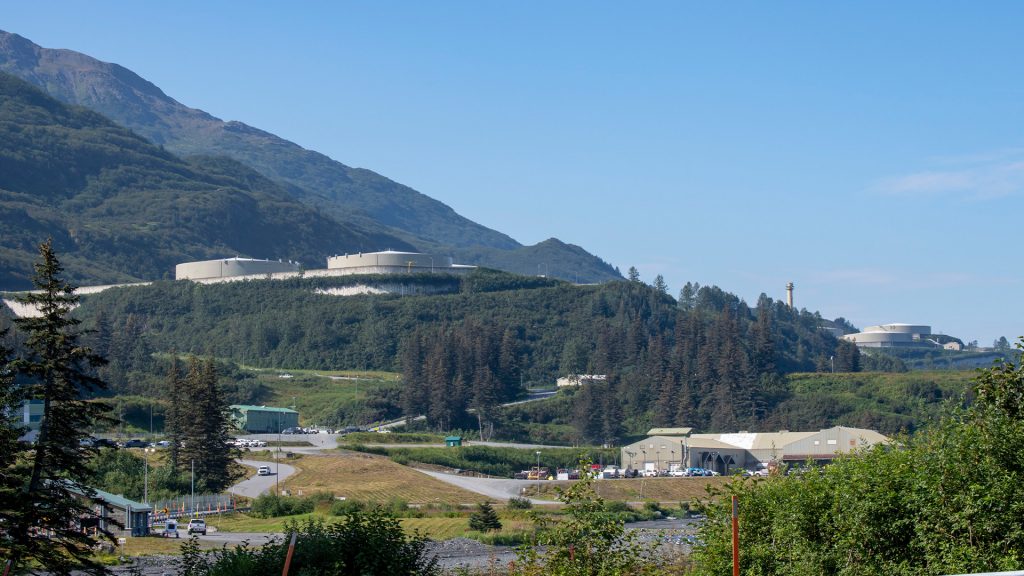Federal law bars Alaska from shipping its own natural gas within the state
Ella Greene March 27, 2025 0
- Alaska faces an impending energy crisis as natural gas supplies from the Cook Inlet, which powers over 70% of the state’s largest electrical grid, are dwindling. Experts predict shortfalls as early as 2027, with recoverable gas potentially running out by the mid-2030s.
- The Jones Act further complicates this problem because it requires U.S.-built and operated ships for domestic transport. However, no compliant LNG tankers currently exist, preventing Alaska from using its own gas reserves.
- State Sen. Robert Myers has introduced a resolution urging Congress to exempt Alaska from the Jones Act. It would allow LNG transport on foreign-built tankers to stabilize the state’s energy supply.
Full Story
Alaska, a state known for its vast natural gas reserves, is facing an impending energy crisis due to dwindling supplies from its primary production basin. Despite its abundant resources, a more than century-old federal shipping law has complicated efforts to address the growing shortfall.
Why is there an impending energy shortage in Alaska?
More than 70% of the electricity provided by Alaska’s largest electrical grid, known as the Railbelt, is generated using natural gas, the majority of which comes from Cook Inlet — the state’s oldest-producing fossil fuel basin. However, Hilcorp, the leading company extracting gas from the region, has warned that supplies are running low and that maintaining current production levels may not be sustainable for much longer.
The Alaska Department of Natural Resources has projected that Cook Inlet could begin experiencing shortfalls as early as 2027, with the basin potentially running out of recoverable gas by the mid-2030s. In light of these concerns, state officials have been exploring alternative energy sources. They include the importation of liquefied natural gas (LNG) from other regions within Alaska.
What is stopping Alaska from using its other natural gas reserves?
A federal law known as the Merchant Marine Act of 1920, commonly referred to as the Jones Act, has presented a significant hurdle in these efforts. The legislation requires that all goods transported between U.S. ports be carried on vessels built, owned, and operated by American companies.
Currently, no LNG tankers meet these requirements, and the last U.S.-built LNG carrier was constructed before 1980. Building new ones domestically is considerably more expensive than outsourcing production to foreign shipbuilders. As a result, Alaska is unable to transport its own natural gas by sea, forcing the state to rely on costly alternatives or international imports.
What happens next?
In response to the situation, state Sen. Robert Myers has introduced a resolution urging Congress to exempt Alaska from the Jones Act. This waiver would allow LNG to be transported on foreign-built tankers, potentially alleviating the impending energy crisis.
“The Alaska State Legislature respectfully urges the United States Congress to recognize the imminent and acute need to stabilize the state’s energy supply and enact a Jones Act waiver that facilitates the urgent transportation of domestic liquefied natural gas between ports in the state until Jones Act-compliant vessels are available,” the resolution requests.
Myers has cautioned that without such a waiver, nearly 50% of Alaskans who rely on natural gas for home heating could face increased costs or supply disruptions.
Related Stories
Ella Rae Greene, Editor In Chief
Ella Greene
Ella and the staff at Clear Media Project (CMP) curate these articles.
Unless otherwise noted CMP does not write these articles.
The views, thoughts, and opinions expressed in the articles published on this blog belong solely to the original authors and do not necessarily reflect the views of the blog owner. The blog owner does not claim ownership of the content shared by contributors and is not responsible for any inaccuracies, errors, or omissions.
All rights and credits goes to its rightful owners. No Copyright Infringement is intended. If you believe any content infringes on your rights, please contact us for review and potential removal.





